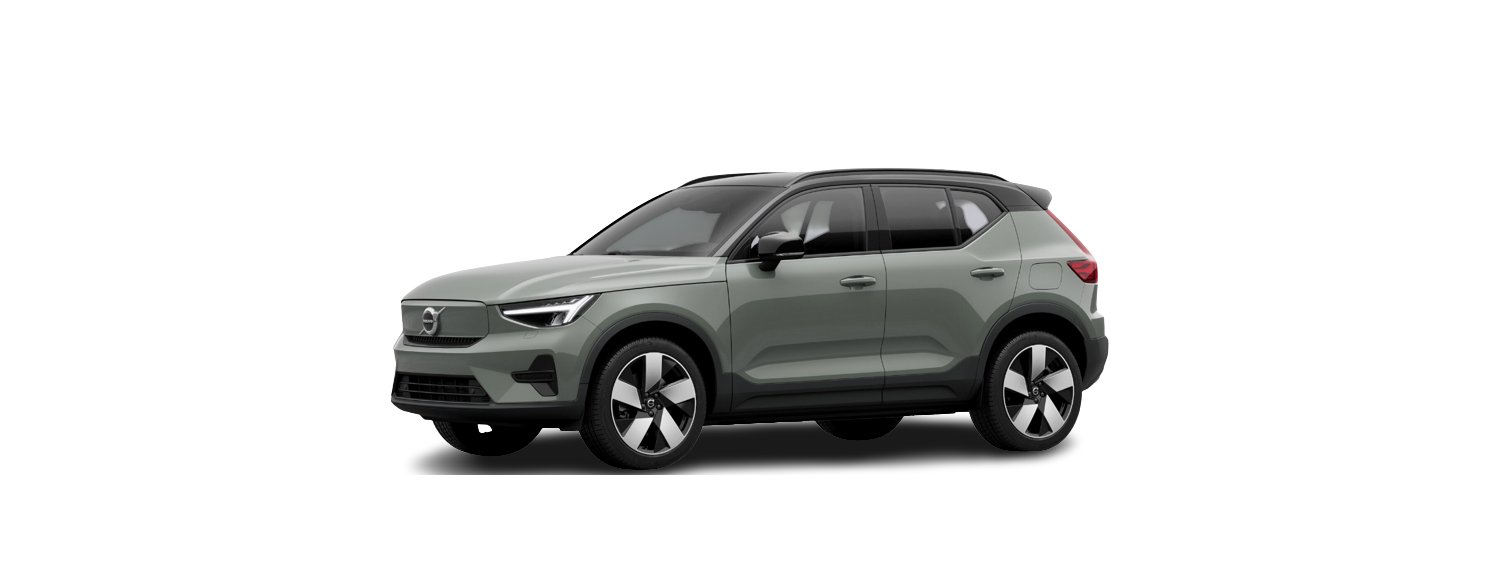2023 Volvo XC40 Recharge Plug-in Hybrid Loading
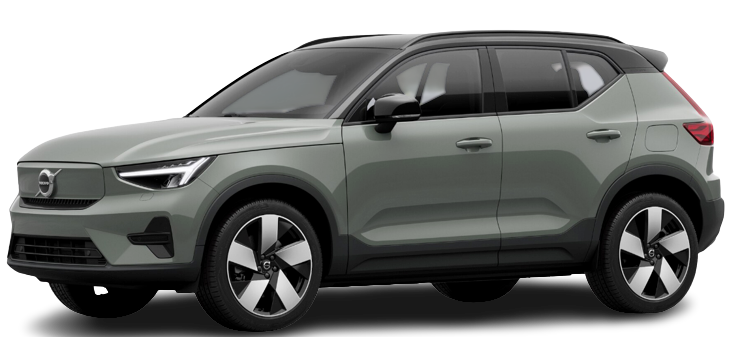
Recommendations for loading
Payload depends on the car’s curb weight. The total weight of the passengers and all accessories reduces the car’s payload by a corresponding weight.
The car’s driving properties change depending on the weight and positioning of the load.
Loading the cargo area
Good things to remember when loading:
- Position the load firmly against the rear seat’s backrest.
- Heavy objects should be placed as low as possible. Avoid placing heavy loads on lowered backrests.
- Cover sharp edges with something soft to avoid damaging the upholstery.
- Secure all loads to the load retaining eyelets with straps or web lashings.
A loose object weighing 20 kg (44 pounds) can, in a frontal collision at a speed of 50 km/h (30 mph) carry the impact of an item weighing 1000 kg (2200 pounds).
Leave 10 cm (4 inches) space between the load and the side windows if the car is loaded above the top edge of the door windows. Otherwise, the intended protection of the inflatable curtain, which is concealed in the headlining, may be compromised.
- Always secure the load. During heavy braking the load may otherwise shift, causing injury to the car’s occupants.
- Cover sharp edges and sharp corners with something soft.
- Switch off the engine and apply the parking brake when loading/unloading long items. Otherwise, you may accidentally knock the gear lever or gear selector with the load into a drive position – and the car
- could then move off.
Increasing the space in the cargo area
Bag hooks
Along the sides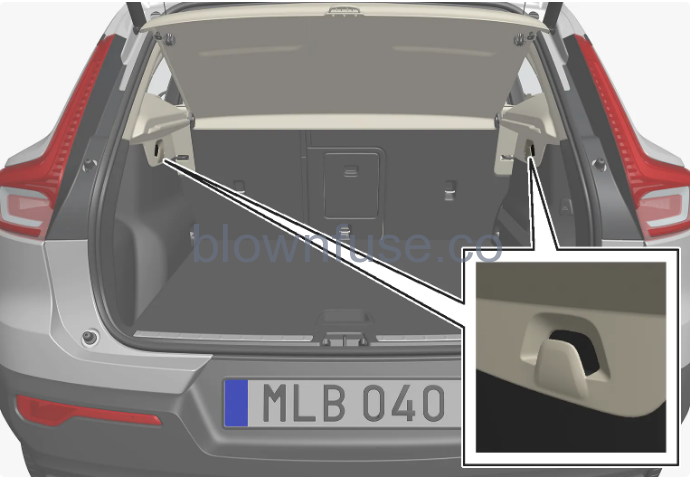
There is a bag hook in the side panel on each side of the cargo area.
Important
The bag hooks may be loaded with a maximum of 5 kg (11 lbs).
In glovebox
There is also an extensible hook in the glovebox that can be used for hanging up a bag.
Load retaining eyelets
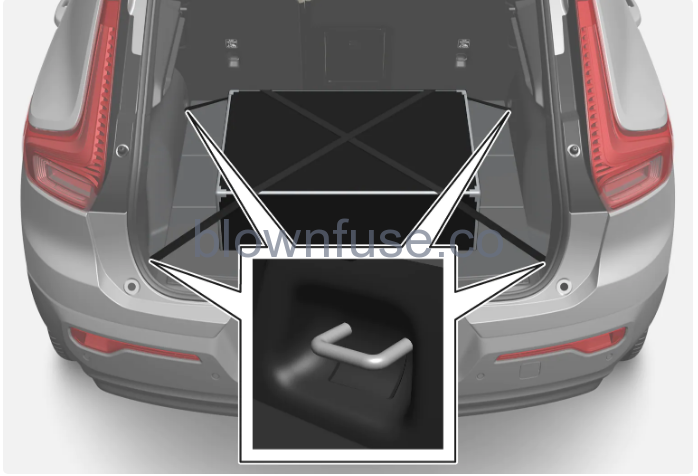
Always secure large and heavy objects with a seatbelt or cargo retaining straps.
Fitting and removing the safety net
The safety net is fitted into four mounting points.
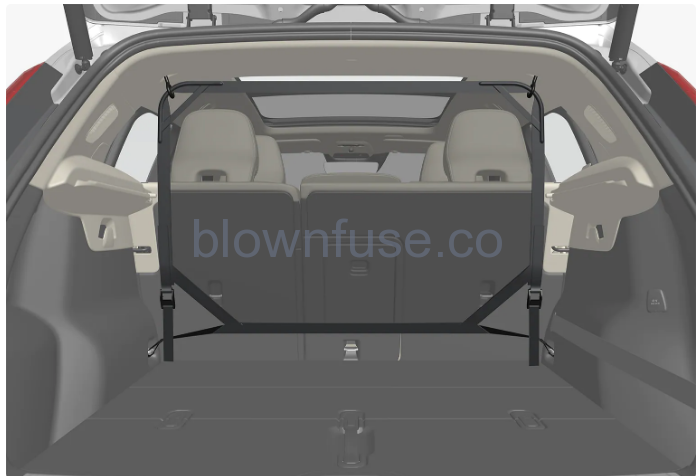
For reasons of safety, the safety net must always be fastened and anchored as described below.
The net is made of strong nylon fabric and can be secured in two different locations in the car:
- Front fitting – behind the front seats.
- Rear fitting – behind the rear seat.
Loads in the luggage compartment must be anchored well and also using a correctly fitted safety net.
Fitting the safety net
Check that the safety net’s upper mountings are correctly fitted and that the puller-straps are securely hooked on.
Damaged safety nets must not be used.
- With forward mounting, the safety net is most easily mounted via the rear doors.
- Unfold the safety net with the upper attachment hooks facing up.
- Hook one retaining hook of the net into the front or rear roof mounting with the anchoring strap locks turned towards you.
- Hook the net’s second attachment hook to the roof bracket on the opposite side.
- Take care to press forward the net’s retaining hooks for each respective roof mounting’s front end position.
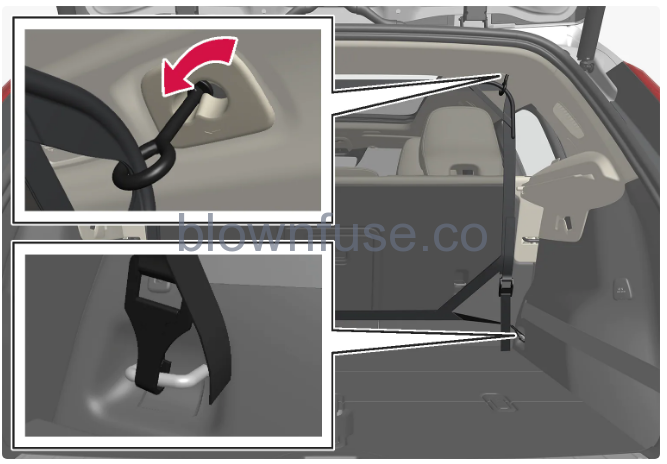
- Rear fitting.
- For rear fitting:
- With the net fitted in the rear roof mountings, hook the safety net’s puller-straps into the front load retaining eyelets in the cargo area.
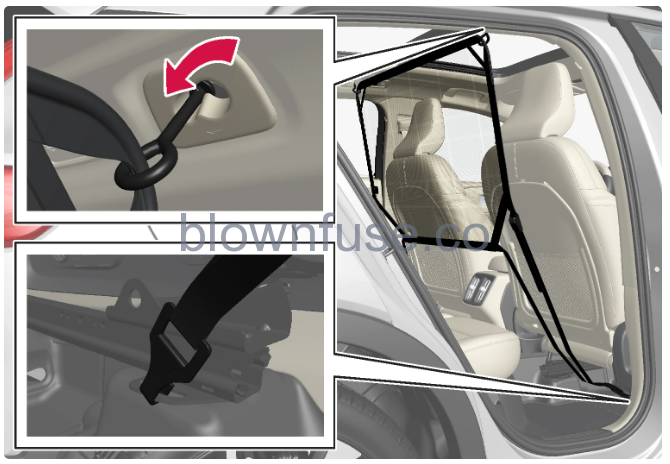
- Front fitting.
- For front fitting:
- With the net fitted in the front roof mountings, hook the puller-straps into the outer eyes on the rear of all seat slide rails. The procedure is facilitated if the backrests are straightened and the seats are moved
- forward slightly.
- Pay attention to make sure that you do not exert hard pressure on the net when the seat and backrest are moved back again. Only adjust until the seat or backrest makes contact with the net.
Important
If a seat or backrest is pushed back hard into the safety net, the net and roof mounts may be damaged.
Tension the safety net with the anchoring straps.
Removing the safety net
- The safety net can be easily removed and folded up.
- Reduce safety net tension by pressing the button in the anchoring strap lock and feeding out a little of the anchoring strap on each side.
- Press in the catches and detach both of the anchoring strap’s hooks.
- Undo the upper attachments and release the net from the roof mountings.
- Fold up the net and store it in its case.
- Refit any clothing hook if required.
Roof load and loading on load carriers
This is to reduce the risk of damage to the car. Volvo’s load carriers are available for purchase at authorized Volvo retailers.
- Distribute the load evenly over the load carriers. Put the heaviest objects at the bottom.
- Check periodically that the load carriers and load are properly secured. Lash the load securely with retaining straps.
- If the load is longer than the car at the front, e.g. a canoe or kayak, fit the towing eye to its front socket and attach the bungee to this.
- The size of the area exposed to the wind, and therefore fuel consumption, increase with the size of the load.
- Drive gently. Avoid quick acceleration, heavy braking, and hard cornering.
Warning
The car’s center of gravity and driving characteristics are altered by roof loads.
Follow the car’s specifications with regard to weights and maximum permitted load.
Towbar-mounted bicycle rack
This is in order to avoid damage to the car and in order to achieve the maximum possible safety during a journey. Volvo’s bicycle racks are available for purchase at authorized Volvo dealers.
Carefully follow the instructions enclosed with the bicycle rack.
- The bicycle rack including load must weigh a maximum of 75 kg (165 pounds).
Warning
Incorrect use of the bicycle rack may cause damage to the towbar and car.
The bicycle rack can loosen from the towbar if it
- is incorrectly fitted on the towball
- is overloaded, see the bicycle rack’s instructions for maximum load weight
- is used for carrying something other than bicycles.
The car’s driving characteristics are affected when a bicycle rack is fitted on the towbar. For example due to:
- increased weight
- reduced acceleration capacity
- reduced ground clearance
- changed braking capacity.
Recommendations for loading bicycles on the bicycle rack
The larger the distance between the load’s center of gravity and the tow ball, the greater the load on the towbar.
Load according to the following recommendations:
- Fit the heaviest bicycle furthest in, closest to the car.
- Keep the load symmetrical and as close to the center of the car as possible e.g. by loading the bicycles facing alternately if several bicycles are loaded.
- Remove loose objects from the bicycle for transportation, e.g. bicycle basket, battery, child seat. Partly to reduce the load on the towbar and bicycle rack, and partly to reduce the wind resistance, which affects fuel consumption.
- Do not use protective covers on the bicycles. This may affect maneuverability, impair visibility and increase fuel consumption. It may also lead to an increased load on the towbar.
Driving with a trailer
Payload depends on the car’s curb weight. The total weight of the passengers and all accessories, e.g. towbar, reduces the car’s payload by a corresponding weight.
- The car’s towbar must be of an approved type.
- Distribute the load on the trailer so that the weight on the towbar complies with the specified maximum tow ball load. Towball load is calculated as part of the car’s payload.
- Increase the tire pressure to the recommended pressure for a full load.
- The engine is loaded more heavily than usual when driving with a trailer.
- Do not tow a heavy trailer when the car is brand new. Wait until it has been driven at least 1000 km (620 miles).
- The brakes are loaded much more than usual on long and steep downhill slopes. Downshift to a lower gear when shifting manually and adjust your speed.
- Follow the regulations in force for the permitted speeds and weights.
- Maintain a low speed when driving with a trailer up long, steep ascents.
- The maximum indicated trailer weight only applies to heights up to 1000 meters above sea level (3280 ft). At higher elevations, the engine output and the vehicle’s climbing ability are reduced due to the reduced air density, and the maximum trailer load must therefore be reduced. The weight of the car and trailer must be decreased by 10% for each additional 1000 m (3280 ft) or part thereof.
- Avoid driving with a trailer on inclines of more than 12%.
Extreme weather conditions, driving with a trailer, or driving at high altitudes, in combination with poorer fuel quality than recommended, are factors that considerably increase the car’s fuel consumption.
Trailer weights
Follow the stated recommendations for trailer weights. Otherwise, the car and trailer may be difficult to control in the event of sudden movement and braking.
The stated maximum permitted trailer weights are those permitted by Volvo. National vehicle regulations can further limit trailer weights and speeds. Towbars can be certified for higher towing weights than the car can actually tow.
Level control
The car’s system for level control endeavors to maintain a constant height regardless of load (up to the maximum permissible weight). When the car is stationary the rear of the car lowers slightly, which is normal.
When driving in hilly terrain
Under certain circumstances, there may be a risk of overheating when towing a trailer. If the engine and drive system overheats, a warning symbol comes on in the driver display and a message is displayed.
The automatic gearbox adapts the gears depending on load and engine speed.
Steep inclines
Do not lock the automatic gearbox in a higher gear than the engine “can cope with” – it is not always a good idea to drive at a high gear with low engine speed.
Parking on a hill
- Depress the brake pedal.
- Activate the parking brake.
- Select gear position P.
- Release the brake pedal.
- Block the wheels with chocks when parking a car with a hitched trailer on a hill.
Starting on a hill
- Depress the brake pedal.
- Select gear position D.
- Releasing the parking brake.
- Release the brake pedal and start driving off.
